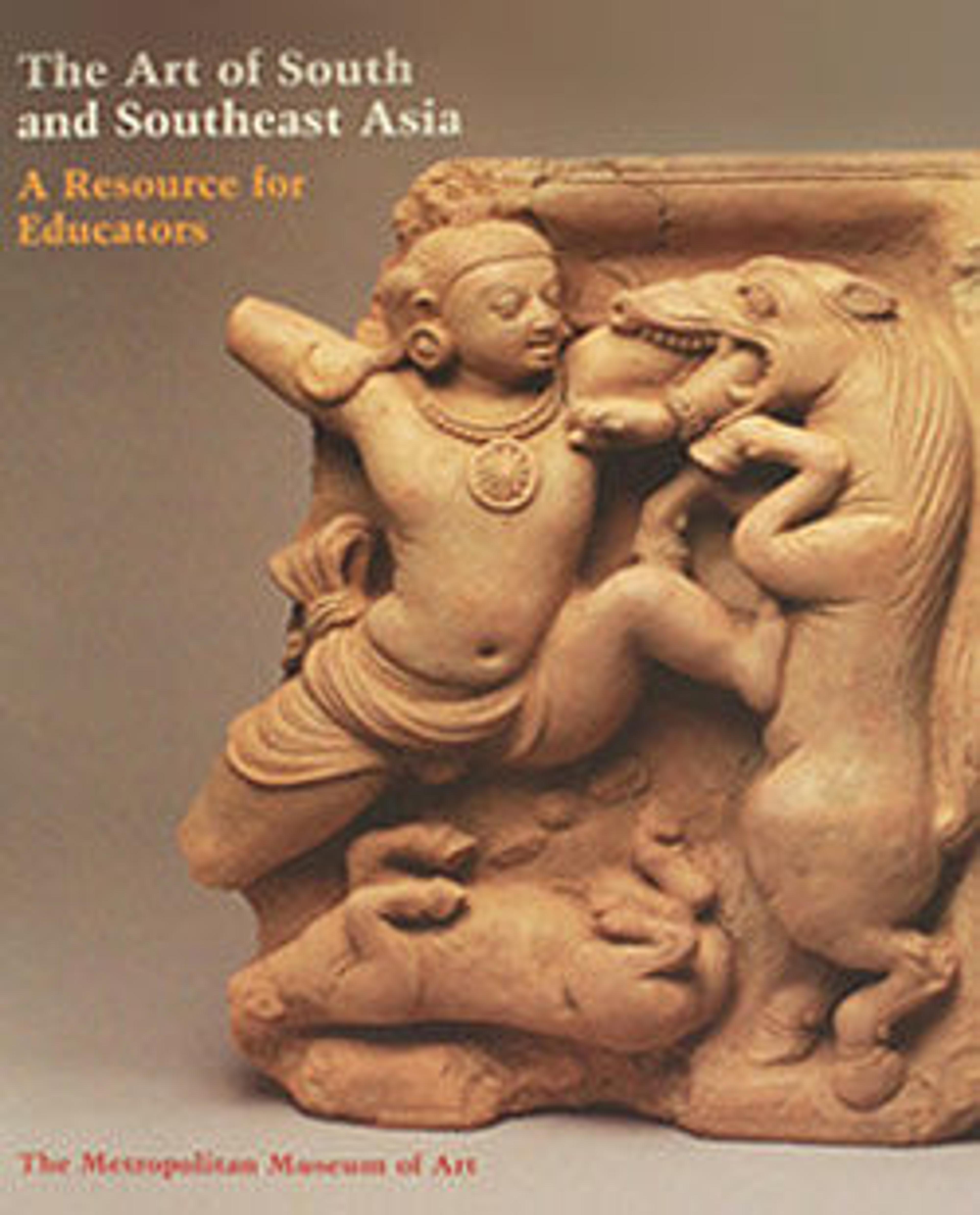Krishna Killing the Horse Demon Keshi
Vishnu appears in innumerable guises (avatars) on earth but none is more popular than that of Krishna, the warrior-king who freed his people from demonic threats. On one occasion the youthful Krishna slayed the demon Keshi, who appeared in the guise of a horse. This subject probably has its origins in Hellenistic legends, most notably the labors of Hercules in which the Greek hero slays the horses of Diomedes. In this terracotta relief Krishna restrains the ferocious Keshi with his foot while thrusting his elbow down the beast's throat. Below the combatants are the dead horse and balls of dung emitted at the moment of death. The graphically observed rendering of the subject is a reminder of the importance of horse sacrifices in early Indian Vedic cult practices, of which this Krishna myth undoubtedly preserves a memory. Temple building began in earnest in India only in the Gupta period, and these brick and stone structures typically were decorated with terracotta plaques of this type for which Krishna was a popular subject.
Artwork Details
- Title: Krishna Killing the Horse Demon Keshi
- Period: Gupta period
- Date: 5th century
- Culture: India (Uttar Pradesh)
- Medium: Terracotta
- Dimensions: H. 21 in. (53.3 cm); W.16 in. (40.6 cm); D. 4 1/4 in. (10.8 cm)
- Classification: Sculpture
- Credit Line: Purchase, Florence and Herbert Irving Gift, 1991
- Object Number: 1991.300
- Curatorial Department: Asian Art
Audio
7920. Krishna Killing the Horse Demon Keshi
0:00
0:00
We're sorry, the transcript for this audio track is not available at this time. Please email info@metmuseum.org to request a transcript for this track.
More Artwork
Research Resources
The Met provides unparalleled resources for research and welcomes an international community of students and scholars. The Met's Open Access API is where creators and researchers can connect to the The Met collection. Open Access data and public domain images are available for unrestricted commercial and noncommercial use without permission or fee.
To request images under copyright and other restrictions, please use this Image Request form.
Feedback
We continue to research and examine historical and cultural context for objects in The Met collection. If you have comments or questions about this object record, please complete and submit this form. The Museum looks forward to receiving your comments.
